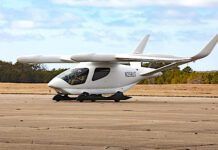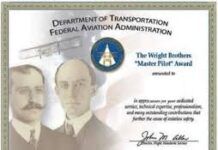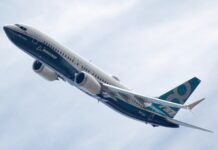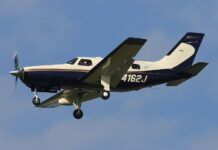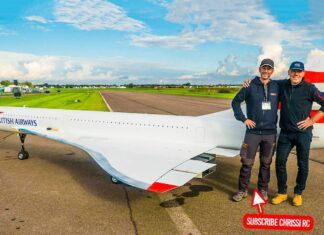This weeks news that the Department of Justice has settled its opposition to a merger of American Airlines and USAirways raises some unanswerable questions but one certainty: The U.S. now has only three major carriers, Delta, United and the new American, once the merger is finalized. The USAirways name will be absorbed and will eventually disappear, but it will probably take several years for that to happen. (In the meantime, the pilots once again get to figure out how to merge seniority lists.)
In its pleading to the DOJ, American argued that it couldnt possibly compete as a standalone with Delta-which merged with Northwest-and United, which merged with Continental. DOJ didnt buy that because it saw the new combined airline as being too dominant in at least two markets, New York and Washington. So as part of the approved deal, the new airline will sell off slots in those two cities, plus Chicago, possibly to low-cost carriers, thus preserving at least some semblance of competition.
So what will it mean having only three majors? No one knows for sure, but historically, at least recently, mergers havent driven fares up nationally except in some select markets. Fares have moved up modestly since 2007, but average inflation-adjusted fares are actually lower than they were 15 years ago, according to Reuters. The fare increases weve seen have largely been due to fuel-price hikes. Airlines have been notorious for flying around seats at below cost, which no doubt contributed to Americans bankruptcy.
But none of us should confuse fares with either add-on fees or service quality, which live in their own strange world independent of normal supply and demand. The upsell for baggage, for seats with more legroom, for food and even for boarding order has become the Holy Grail of airline profitability. On the last American flight I was on, they even cheaped out on the pretzels, although I got a full can of diet Dr. Pepper.
More than anything else, this proliferation of fees has moved airlines out of the red and into the black, although not by much. American recently reported a quarterly record $530 million in profits, belying its claim that it cant compete with Delta and United. To get that number, they had to back out exceptional costs related to AAs bankruptcy, but the trend is still notable.
Not that airlines have suddenly become a great business to be in. Airlines for America, an industry trade group, reports that industry wide, profits have softened since 2010, shrinking from 1.6 to 0.2 percent in 2012. Presumably, there are still things airlines could unbundle and charge for, including that Dr. Pepper I so enjoyed and for carry-on baggage. (Spirit already does the latter.) Frankly, I expect to see more of this, not less, with just three majors. That’s why the low-cost carriers like Southwest and JetBlue have such an important role to play.
Besides the merging of the pilot lists, the new AA will have to merge frequent flier programs, too. I suspect the real loyalists will see some changes, maybe good, maybe not. American said it would merge USAirways passenger miles into the American list, which sounds fair enough. But American has a multi-tiered upgrade program for its Advantage members and it has nearly twice as many airplanes and more first class seats than USAirways does, thus more upgrade opportunities. So what happens when all the riff-raff from USAirways clogs up the program? Will there be more or fewer upgrades for the stalwarts? Will the USAirways loyalists enjoy more perks? Or will it just mean less bin space for gate lice like me? Im pretty much counting on that.
And will the baggage-fee issue get more competitive? Leaving Dallas last month from AOPA Summit, I was behind a couple who spied a Southwest 737 on the adjoining taxiway with a big sign and arrow pointing to the baggage bay: Bags Fly for Free Here. The man remarked to his wife that they ought to check Southwest next time they fly into Dallas. Better be quick about it. Southwest is considering bag fees, too.
The merger will give American the largest route structure and the most airplanes of any carrier which, in theory, ought to make them attractive to the lucrative top of the market; business travelers who value flexibility and choice, but arent price sensitive. In a 2012 report, (PDF)AirlineFinancial.coms Bob Herbst said the Delta and United mergers gave those airlines strong pricing power to poach business travelers from American. With a larger route structure and predicted lower operating costs and efficiencies in the future due to a younger pilot population and newer aircraft, American is poised to get them back. In his report, Herbst concluded that the AA/USAirways merger was a must do if either airline hoped to compete.
Still, its a tough business to be in. Americans parent, AMR, said in its news release announcing DOJs acquiescence to the deal, that it would generate up to $1 billion a year in profits. Sounds like a tidy sum. But it will take about $38 billion in revenues to earn it, bringing to mind something Richard Branson once said in a variation on a theme those of us in aviation know all too well: If you want to become a millionaire, start as a billionaire and buy an airline.
Join the conversation. Read others’ commentsand add your own.





